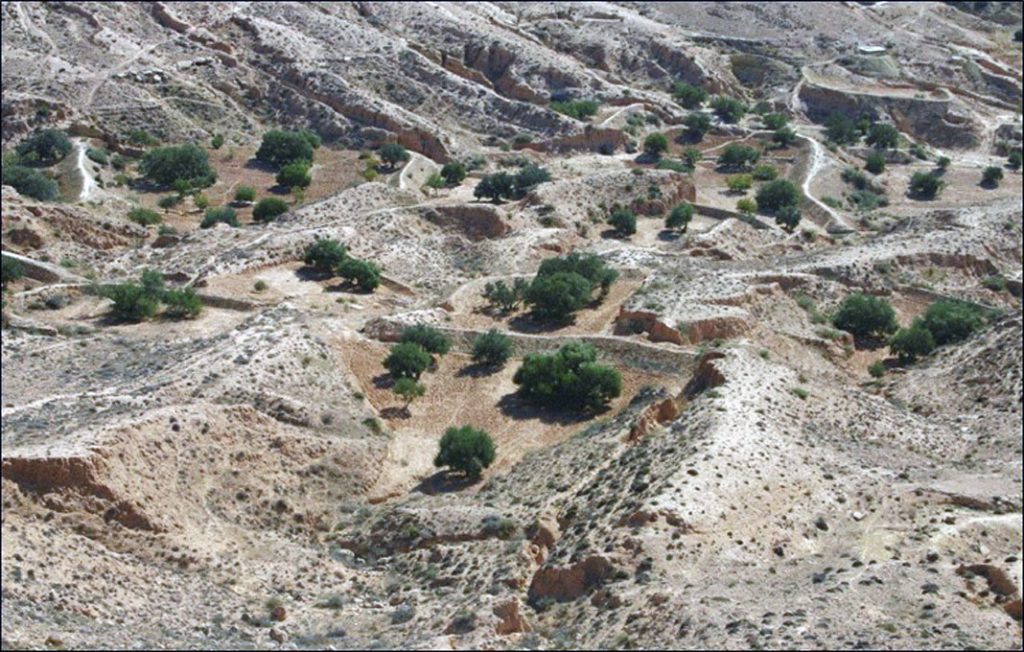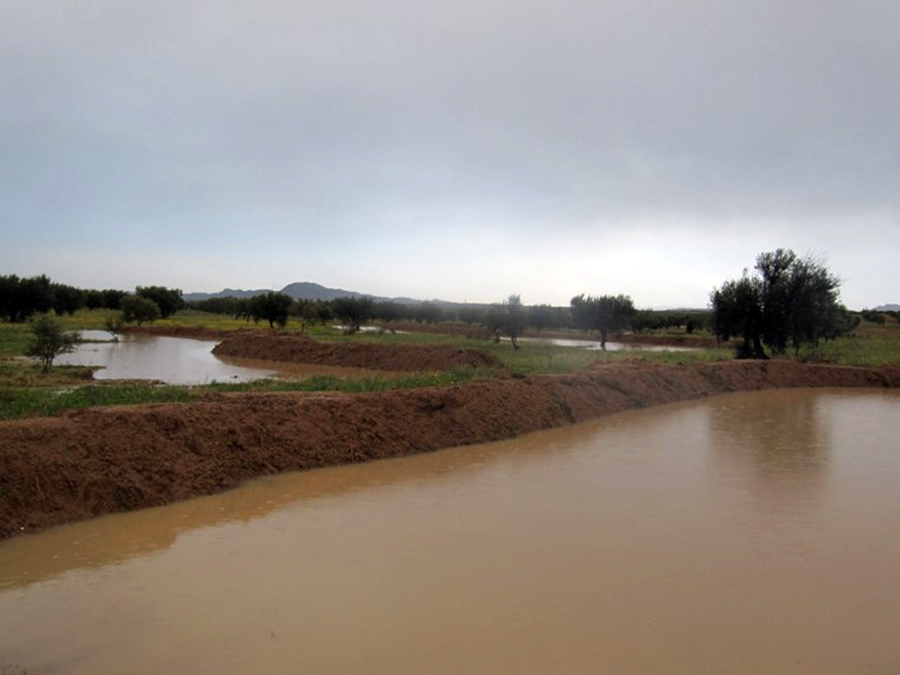
Jessour and Tabias are traditional systems crucial for water and soil conservation in the agricultural zones of southeastern Tunisia. These innovative techniques maximise limited water resources and preserve the fertility of arid lands, playing an essential role in sustainable agriculture and supporting local communities in harsh, dry environments. Their effectiveness ensures the longevity and productivity of the region’s agricultural practices.
Jessour Systems: An Enduring Tradition
The Jessour technique involves building small stone dams along slopes to prevent gullying, retain sediment, create soil, and temporarily hold back water. The cultivation area is established using the natural watershed as an impluvium to trap surface water and slope sediments. This is done upstream of an earthen dyke, known as a Tabia, which blocks the thalweg perpendicular to the direction of flow. The accumulation and storage surface for sediment and water is called a “jesr.”
These structures concentrate water, enabling rainwater resources to be multiplied more than threefold. To help concentrate flows towards the “jesr,” a low wall is sometimes added on the slope. Measurements and units must be strictly respected. Similarly, a dry-stone wall called a “sirra” can reinforce the Tabia downstream. Weirs are also installed in Tabias to avoid or limit destruction during floods. These weirs can be single or double, central or lateral, and made of stone, masonry, concrete, or other materials.
The Multiple Benefits of Jessour
In addition to improving agricultural production, traditional systems like Jessour help replenish groundwater, control flooding, and protect downstream infrastructure, while limiting water erosion. Jessour and Tabias are effective ancestral techniques for preserving water resources and conserving soil in Tunisia. They are widespread in southern Tunisia’s mountainous regions, where the most advanced models can be found. These structures occupy every valley, even the narrowest, marking them with lush vegetation. The dark green crowns of olive trees and the pale foliage of fig trees contrast with the yellowish arid slopes surrounding them.
Towards Sustainable Agriculture in Tunisia: Jessour and Tabias as Tools for Preserving Ecosystems
Jessour and Tabias are practical solutions for arid and semi-arid regions. They maximise water retention and reduce erosion through the construction of profiled terraces and the use of local materials. Jessour technology is generally used in mountainous and arid regions with medium to high slopes. This technique has enabled the establishment of ancient olive groves based on rain-fed agriculture in rugged landscapes. It has allowed the local population to achieve self-sufficiency and supply neighbouring areas with various agricultural products, such as olive oil, dried figs, and dates.

Tabias Technology: A Recent Innovation
The Tabia system, meanwhile, is a recent innovation developed by mountain dwellers who have migrated to the gently sloping plains. These structures, which include earthen dikes and weirs, are mainly used for arboriculture and annual crops. Tabias differ from Jessour in that they include lateral dikes and sometimes small flood diversion dykes. They are built manually or with machinery, depending on their size, and are commonly used in areas with slopes of less than 3% and deep soils. The use of Tabias has become popular among the inhabitants of the neighbouring plains and foothills, converting their pastures into arable land in the central and southeastern regions of the country.
Additional roles for Jessour and Tabias
Although Jessour and Tabias techniques were originally developed for agricultural production, they now fulfil three additional roles:
Groundwater recharge via infiltration of runoff into the terraces.
Flood control and protection of downstream infrastructure and towns.
Controlling wind erosion, by preventing sediment from reaching downstream plains, where wind speeds can be particularly high.
Visit ResAlliance’s official website
This article was originally written by:
Samir Ghannem, Sondes Fkiri, Mohamed Tahar Elaieb
National Research Institute of Rural Engineering, Water and Forests – Tunisia (INRGREF)
The post Tabias and Jessour: an ancestral hydro-agricultural system in arid environments appeared first on Resilience Blog.